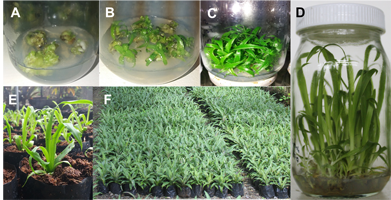 The production of Queen pineapple is set to increase with the development of a propagation protocol and planting system by the Visayas State University (VSU), in cooperation with the Camarines Norte State College and the Department of Agriculture Regional Field Office V (DA-RFO V).
The production of Queen pineapple is set to increase with the development of a propagation protocol and planting system by the Visayas State University (VSU), in cooperation with the Camarines Norte State College and the Department of Agriculture Regional Field Office V (DA-RFO V).
These were the outputs of the program, “Enhancing the productivity and marketability of Queen pineapple” funded by the Philippine Council for Agriculture, Aquatic and Natural Resources Research and Development of the Department of Science and Technology (DOST-PCAARRD). Dr. Maria Juliet C. Ceniza of the VSU leads the program.
Somatic embryogenesis protocol
Somatic embryogenesis protocol is an alternative technique for rapid mass propagation of quality Queen pineapple planting materials. The protocol involves the use of suckers and crowns explants to produce true-to-type planting materials.
The protocol can produce 8,000-10,000 Queen pineapple plantlets or explants, which can be produced 8 to 10 months earlier than the traditional method of producing Queen pineapple suckers.
Through the propagation protocol, a total of 12,500 potted Queen pineapple seedlings were produced.
Planting density and intercropping system
Another output of the program is the optimization of planting density and intercropping system for Queen pineapple.
 Based on initial results, the combination of fertilizer recommended rate (298-70-315 kg/ha nitrogen, phosphorus, and potassium (NPK)) for Queen pineapple and planting density of 300 plants/ha (100cm x 50cm x 30cm planting distance) produced the highest fruit yield of 61 MT/ha in monocropping system in Leyte. This is a 203 percent increase in the national average of Queen pineapple yield at 30 MT/ha.
Based on initial results, the combination of fertilizer recommended rate (298-70-315 kg/ha nitrogen, phosphorus, and potassium (NPK)) for Queen pineapple and planting density of 300 plants/ha (100cm x 50cm x 30cm planting distance) produced the highest fruit yield of 61 MT/ha in monocropping system in Leyte. This is a 203 percent increase in the national average of Queen pineapple yield at 30 MT/ha.
Meanwhile, in Camarines Norte, as much as ₱118,841 per hectare can be earned in Queen pineapple plantation with planting density of 300 plants/ha applied with fertilizer based on soil analysis. This was a result of a cost and return analysis conducted in the province.
In terms of intercropping system, a 157 percent increase in yield or 47 MT/ha of Queen pineapple was seen in Leyte. The plantation was intercropped with coconut.
On the other hand, production of Queen pineapple sucker as planting material and leaf as basis of fiber yield was assessed in an intercropped field. The results showed that the 14 suckers per plant was the highest average obtained in a field intercropped with coconut. The plantation had 240 Queen pineapple plants/ha that used the recommended fertilizer rate. In terms of leaf harvest, the highest average weight was recorded at 248 grams per plant in a field with 300 plants/ha that used the recommended fertilizer rate.
